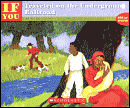
Author: Mary Rowitz
Theme:
The theme of this book is working together is better than working alone.
Synopsis:
This story is about a traveler who asks people in the village if they have any food to spare, but the people do not have enough for a whole meal. The traveler shows them if they put their food together and cooperate with one another, they have enough food to feed everyone. Pre Reading Activity:
Questions: Who likes soup? What is your favorite soup? Do you and your family make home made soup or store bought?
Activity:
Together as a class list all the favorite soups. List what makes each of their soups special to them.Post Reading Activity:
Questions:
Who wants to make stone soup? Questions:
Activity:
Have students make a list of ingredients the class will need to make stone soup. Assign each student to bring in one ingredient and make soup with the class.
Reflection:
I think this is a great story to read and make soup with younger children. They will see how working together can produce more than working alone. The story shows people that if everybody volunteers to help their community that one little thing could turn into a big thing. This story is about learning what happens when we share and help each other, which is perfect for elementary students to learn.


































